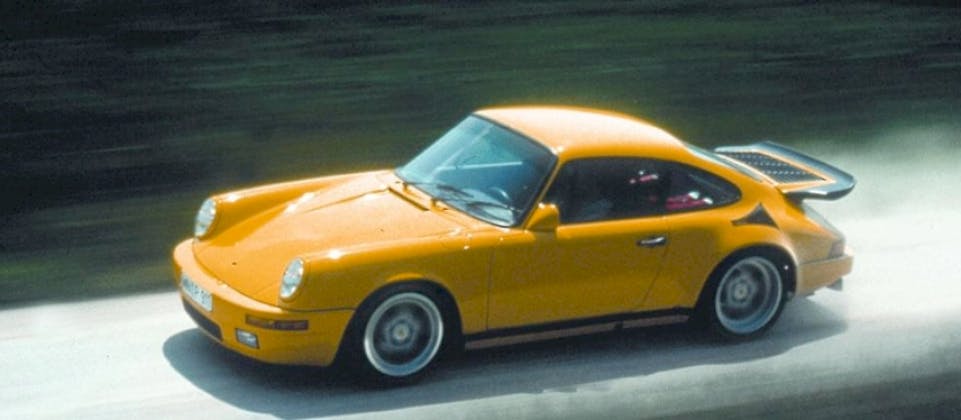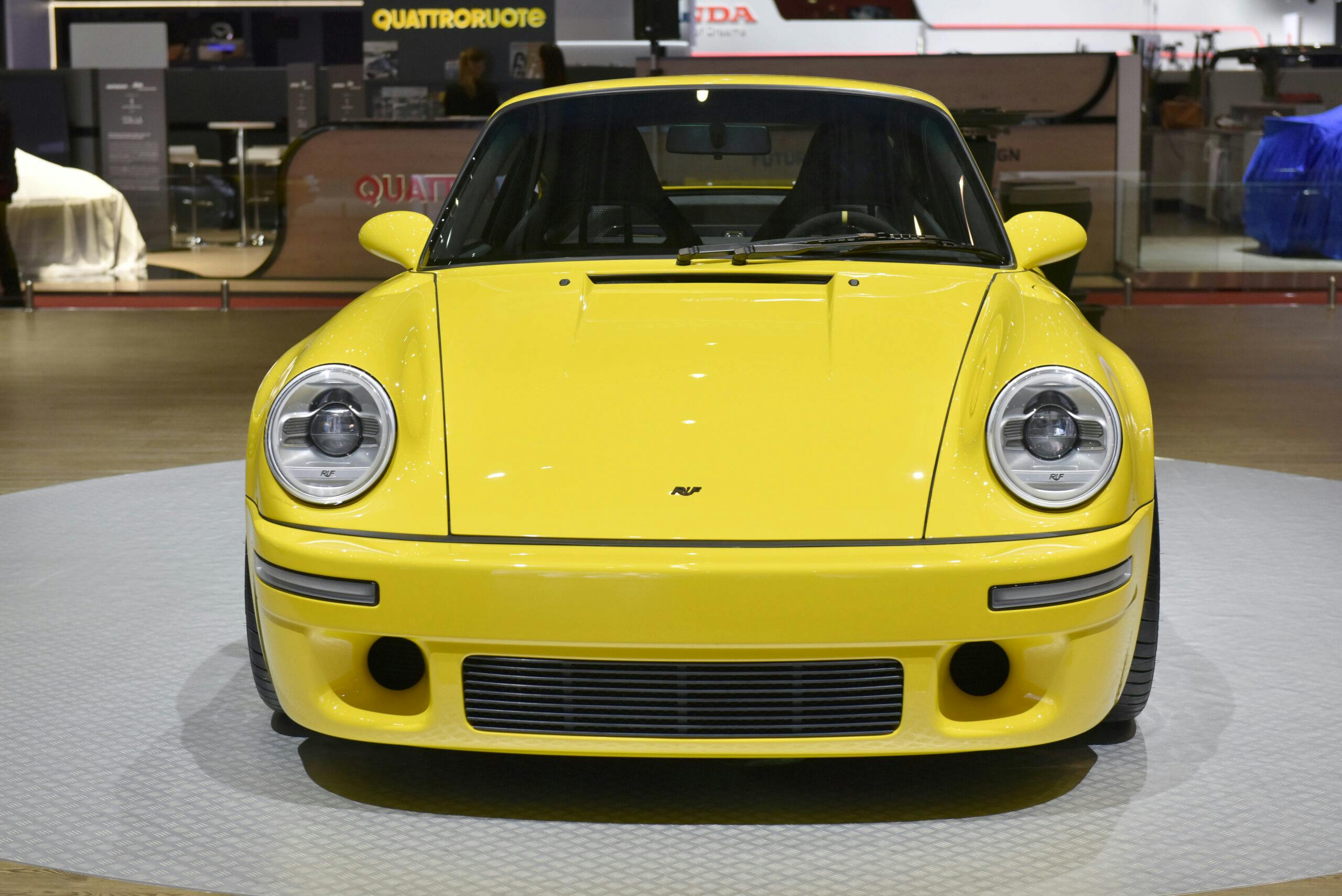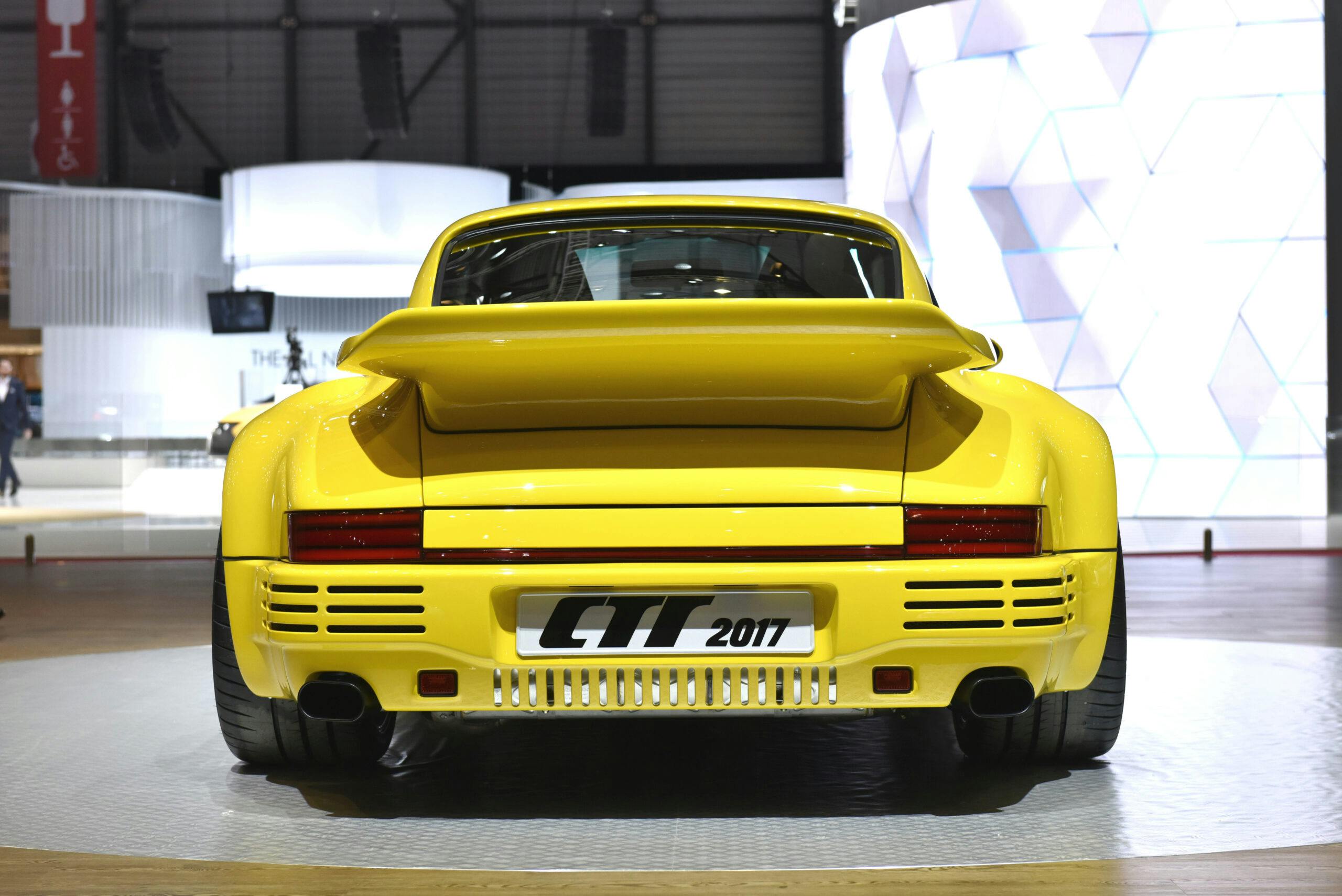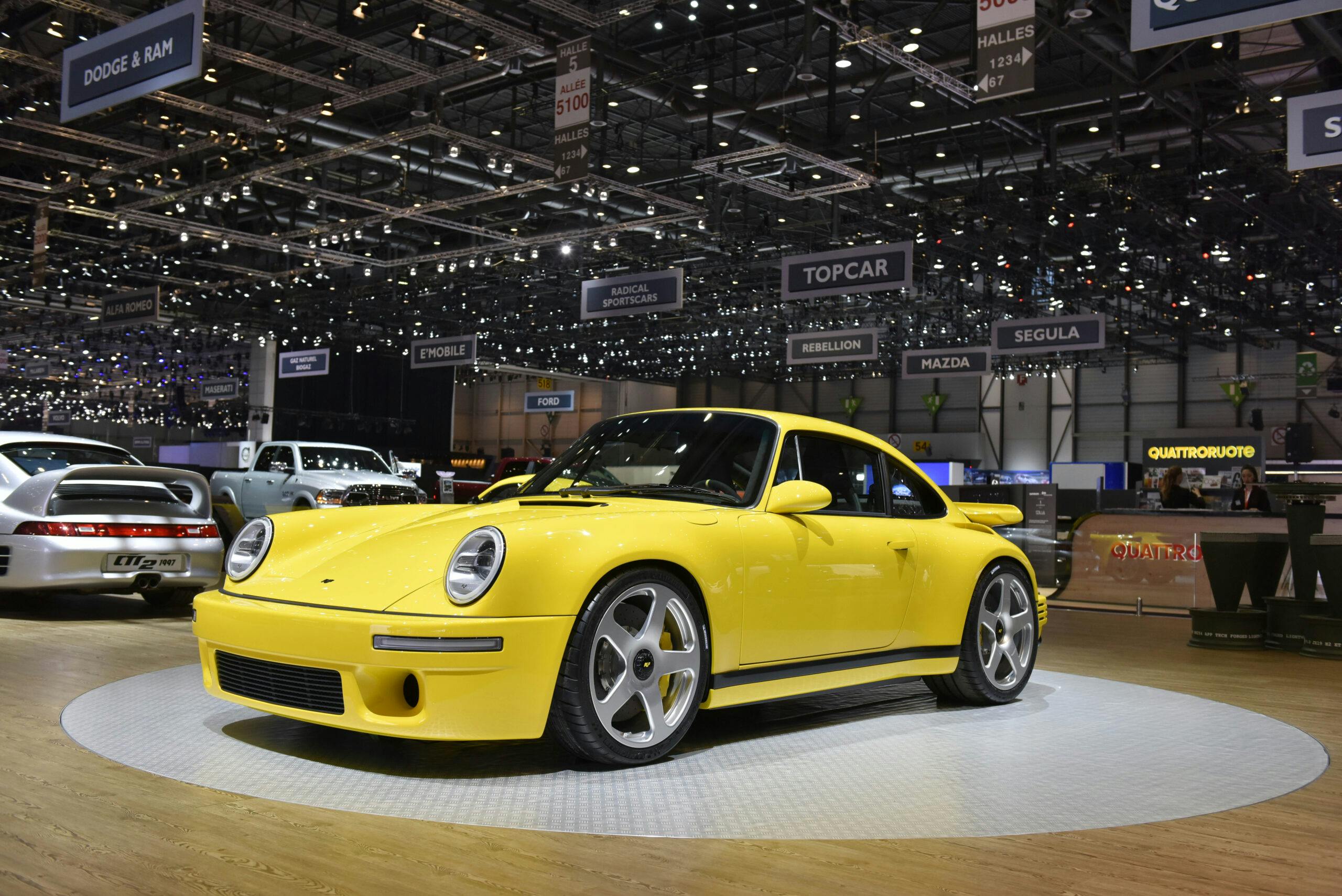5 times that Ruf was on fire

In amongst all the multi-million dollar sales and supercar reveals of Monterey’s Car Week you may have missed a significant milestone in the 84-year history of German Porsche tuner Ruf.
The company, which began pumping gas (and still does) in the small Bavarian town of Pfaffenhausen, unveiled its most powerful model ever—the 800-hp CTR3 Evo.
There was surprisingly little fanfare for this 236-mph rocketship, or indeed the R Spyder, Tribute, and BTR Twin which the company also uncovered in California.
Perhaps that’s because Alois Ruf would rather let the cars speak for themselves as they have always done. Here are five times that Ruf was definitely on fire.
1977 Turbo 3.3

The Ruf family’s fascination with Porsche began in 1963 when Alois Ruf Senior took a crashed 356 into storage at his garage. He soon diversified into Porsche parts and service, but it wasn’t until three years after his death, in 1974, that his son would begin seriously modifying the Stuttgart-supplied cars. He started by stroking the 930 Turbo to 3.3 liters and boosting it to 300 hp—an increase of almost 50 horses.
1987 CTR “Yellowbird”
A decade later, Ruf made headlines when its new CTR “Yellowbird” became the fastest production car in the world. In April 1987, the 463-hp, 3.2-liter turbocharged machine was clocked at 211 mph–besting the Porsche 959 and Ferrari F40. A year later it increased its margin to 213 mph. With its wide body, upgraded aero, huge NACA ducts for cooling, beefed up brakes, and an upgraded suspension, the Yellowbird was much more than a straight-line sprinter as a now-legendary video of it monstering the Nürburgring proved.
1995 CTR2

In 1995 Ruf was back in the record books with the CTR2. Based on the 993 Turbo, Ruf managed to get first 520 and later 580 hp from the car’s 3.6-liter engine. The body featured lightweight Kevlar, while suspension and braking were both seriously upgraded. Reaching 217 mph, a Ruf was again the fastest production car in the world, ahead of the Jaguar XJ220. Only the McLaren F1 could knock the CTR2 off its perch when it hit a remarkable 241 mph in 1998.
2017 CTR
To mark 30 years since it took the world by storm with the original CTR, Ruf launched its successor. Powered by a twin-turbo 3.6-liter flat-six, the 2017 CTR produced 710 horsepower, but its biggest innovation was its carbon fiber monocoque–the first of its kind to feature in a rear-engine car. “The concept for the 2017 CTR is one that I have had in my head for a very long time,” said Alois Ruf. “We have been waiting for the right point in our history to build our own car and the 30th anniversary of the CTR ‘Yellow Bird’ is that moment.” The CTR weighed just 2640 lbs, could hit 62 mph from rest in under 3.5 seconds, pass 125 mph in less than nine seconds, and max out at 225 mph.
2023 CTR3 Evo
Today’s Ruf flagship adds extra spice to the 2017 recipe. Now running a dry-sumped 3.8-liter engine, there’s 800 hp and 730 lb-ft of torque to play with. That’s all sent to the rear wheels via a seven-speed dual-clutch transmission. It wears ceramic disc brakes all around, pushrod suspension, and it comes with a top speed of 236 mph. Priced from around $1.5 million it “takes our iconic supercar to the next level,” says Ruf.
***
Check out the Hagerty Media homepage so you don’t miss a single story, or better yet, bookmark it. To get our best stories delivered right to your inbox, subscribe to our newsletters.








For a second I thought a 911 on the side of the road burning was going to be one of the 5 times a Ruf was on fire. Too soon for the joke? Well it’s not a Lambo so I guess we are safe.
Yellowbird for the win!